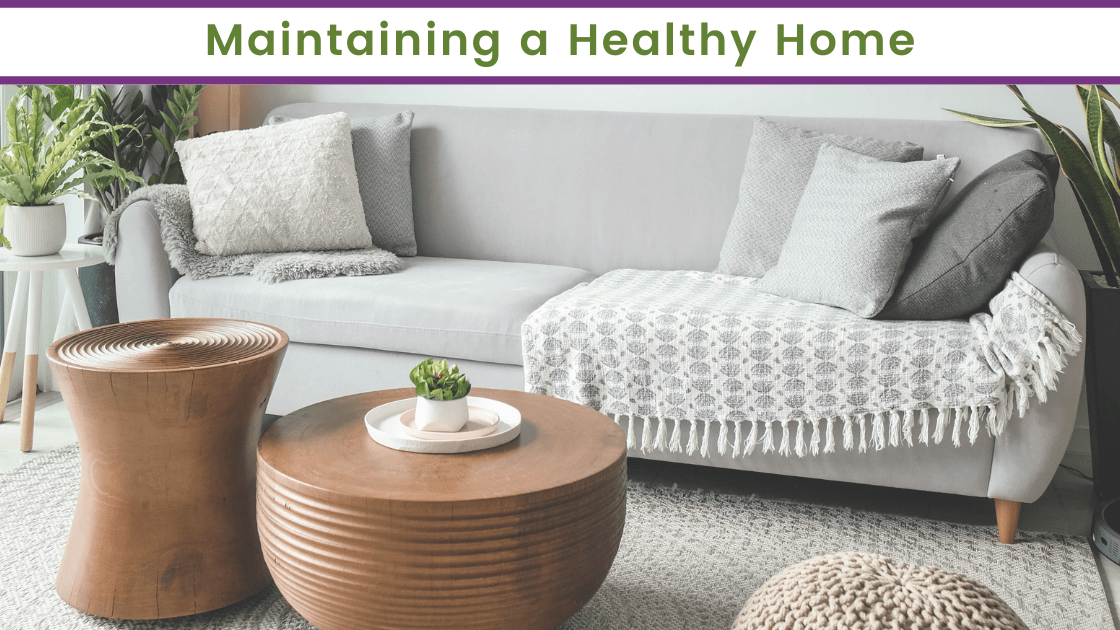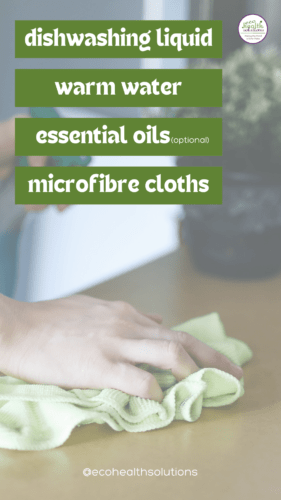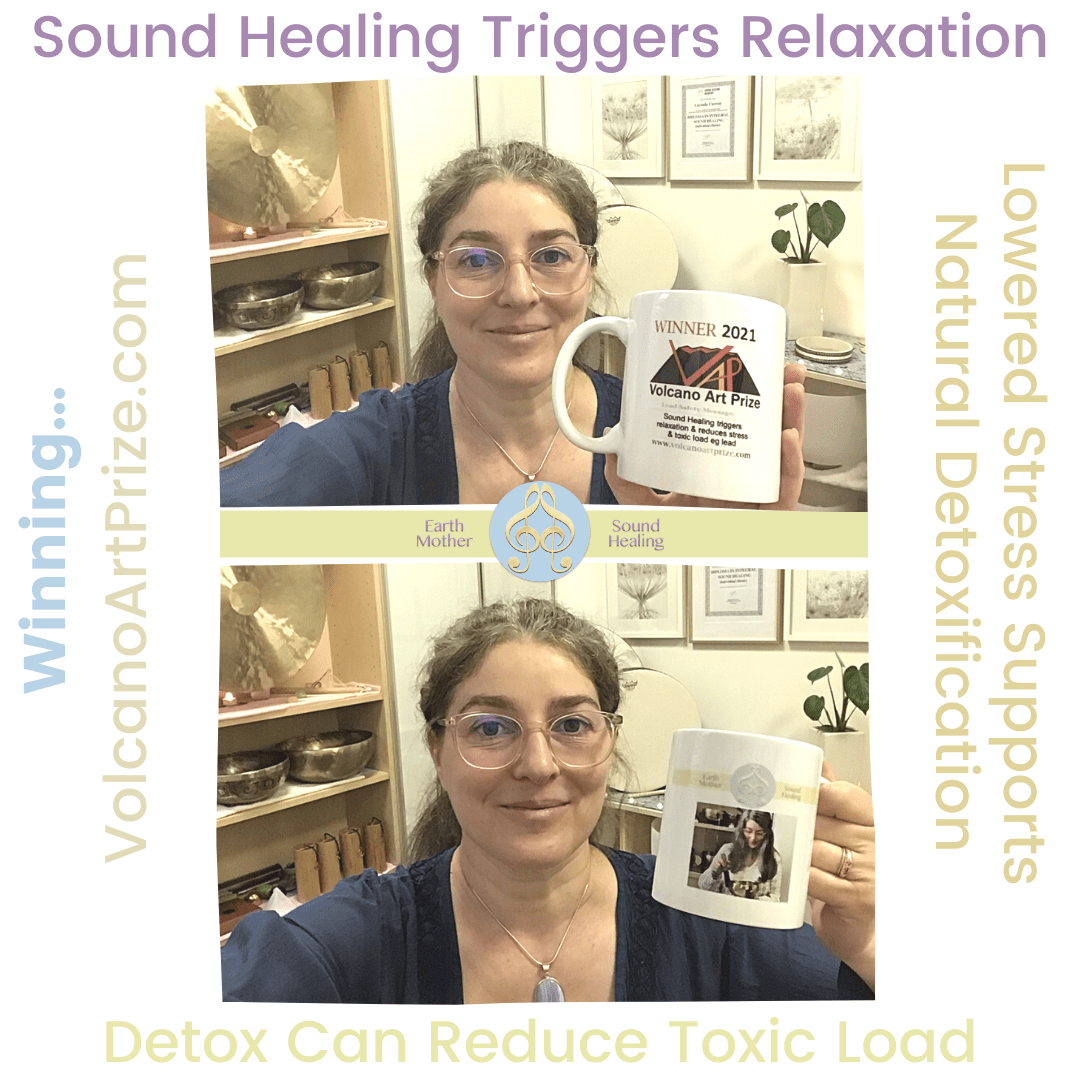by Lucinda Curran | building biology, buildings and health, humidity, indoor air quality, indoor environmental health, mold, mould
Mould: Dos and Don'ts
There is a lot of information and misinformation about mould as science is working to understand it and its effects on health and wellbeing. Here are my Mould Dos and Don’ts to help clear things up. Before we dive in, let’s acknowledge some facts about mould.
Mould is Majestic
If you haven’t seen this video, please take a moment to watch fungi (mould is fungi) before continuing… It’ll make it clear why I say mould is majestic.
Mould plays an important role within our planet. However, we don’t want it in our homes.
Just like a caterpillar is amazing, but not in our salad!
Mould is Mighty
Mould is mighty in that it has well-developed strategies to survive multiple forms of attack and to keep its species going.
The main strategy is to release spores any time it feels threatened.
You could say that it’s a bit highly strung, because it feels threatened any time any of the following are changed.
- Moisture
- Temperature
- Air movement
- Light
If you’re a note-taker – then jot that down. 😉
Mould is Monstrous
Mould can cause incredible damage to our buildings – as by nature, its role is to break down materials.
And, it’s very good at this.
It has also been linked to an array of health issues.
Mould is a Moisture Problem
Mould needs something to grow on, food (simplest for them are cellulose-based materials such as wood, paper, fabrics) and moisture.
Moisture can come in the form of rain, a burst pipe, condensation, increased humidity levels, a spill, and so on.
Mould Dos and Don’ts #1 – Don’t fall for the quick-fix of just cleaning mould off a surface
I get it – cleaning mould off a surface is much easier (emotionally and financially) than replacing plasterboard and more.
However, unless it’s only superficial mould, this isn’t going to address the problem.
What do I mean by “superficial mould”?
What I mean here is that the mould is literally only on the surface – it hasn’t gone deep and is not growing IN a substrate or material.
An example of this would be mould on a window pane, having formed because of condensation. Or mould on the ceiling of the bathroom that’s caused by poor ventilation – this would be in the early stages only.
In these cases, cleaning mould off a surface is acceptable.
And from there, you need to prevent the area being wet – so drying off the windows each day, or installing an extractor fan that dumps the hot moist air from your shower outside your building.
Yet in many cases, mould isn’t superficial.
And therefore, the cause needs to be addressed, and the mouldy material needs to be properly cleaned or replaced.
Mould Dos and Don’ts #2 – Don’t Use Vinegar OR Bleach to “Clean” Mould
I’m often asked, especially by journalists, to comment on vinegar (or bleach) as the go to clean mould off a surface…
And as I tell them, it’s not about the product, it’s the technique.
In a recent article, journalist Livia Gamble quoted me like this:
“I can’t emphasise enough the cleaning technique is what works best – not a product,” she says.
“The detergent-water solution will kill mould, and adding thyme and oregano essential oils will increase its effectiveness.
“However, it is the use of microfibre cloths and vacuum cleaners with true HEPA filters that can remove the mould.”
~ Lucinda Curran, quoted by Livia Gamble in Better Homes and Gardens
What’s wrong with vinegar?
The vinegar we can buy is very dilute, and then people often suggest a further 70:30 dilution. Basically, you end up adding more moisture to the mouldy area – which makes no sense when you know that mould is a moisture issue.
What’s wrong with bleach?
Bleach is to be avoided at all times.
All bleach does is whitens mould – so you can’t see it for a while, usually a few weeks.
It also is carbohydrate-based, so provides a food source for mould.
So what do you do?
Mould Dos and Don’ts #3 – Do Use a Detergent Solution to Clean Mould
I shared my method with Better Homes and Gardens:
What you'll need:
- dishwashing detergent
- two microfibre cloths – microfibre cloths are designed to pick things up off a surface, as opposed to regular cloths, which just smear them around.
- thyme or oregano essential oils (optional)
- water.
Instructions:
- To clean the surface, mix up dishwashing detergent with warm water.
- Lucinda recommends adding essential oils, like oregano and thyme, to the soapy water mix to “supercharge the effect”.
- Dip into the soapy solution using microfibre cloths square* and wipe down the surface. After you have used each square on both sides to remove mould, Lucinda says to throw it out. This is to avoid cross-contamination and causing the mould to spread.
*To clarify –
I recommend buying some cheap microfibre cloths from the hardware store – as they are going to be treated as “single use items.”
Cut each one up into smaller piece to minimise waste.
Use both sides of one smaller piece (or square) – without double-dipping, and then discard it.
A key point is not to cross contaminate.
“Always keep cross-contamination in mind – as it is easy to spread mould from one area to another, and cause it to release spores which will help it to spread.” (Gotta love it when the really important messages make it into an article!)
This is also why we’re not double-dipping and we’re disposing of each square of cloth that is used.
Mould Dos and Don’ts #4 – Don’t Put Additive in Your Paint
I’ve seen fungicides and “mildewcides” recommended to deal with mouldy ceilings.
This is a massive no-no.
Please don’t do it.
Anything that ends with “-cide” means it is designed to kill.
Fungicides are designed to kill fungi – mould is a fungi.
“Mildewcide” would be designed to kill mildew – which is mould, which is fungi. So another word for the same thing.
What’s wrong with these?
Simply put, these are like antibiotics… and can result in the mould equivalent of “superbugs.”
Mould is tough enough on our health, our buildings and to get rid of without having it mutate further into resistant strains…
So, address the issue, don't just paint over it.
Where’s the moisture coming from?
What’s been wet?
Is everything dry?
This is a complex area, and that’s why there are IICRC-trained mould remediation professionals.
Mould Dos and Don’ts #5 – Do Ventilate Your Home, Daily!
Ventilation dilutes indoor air contaminants, exchanging the air, and bringing fresh clean air into your home.
You may have seen statistics saying that indoor air can be 5-10 times more polluted than outdoor air. This is often due to a lack of ventilation.
(On that note, having an air purifier running 24/7 is NOT a substitute for ventilation.)
While it is an amazing thing to do, it won’t solve mould issues, instead it will help you to manage them.
What’s the best way to ventilate your home?
Simple!
Go around your home opening every single door and window (internal and external). Wait 2 minutes, then close them again (if you choose).
Do this as often as possible.
Mould – Just the Facts
So there you have 5 Mould Dos and Don’ts.
Whilst I know there’s a lot to digest here, there’s so much more to it…
And if you’re keen to go deeper and learn about how to clean up your belongings (YES you can clean many things, not everything has to be turfed out), then enrol in my Dealing With Mould course for just $147 AUD – this is a game-changer, and is full of practical tips for you based on my training and experience in the field.
I’d love to see you there.
by Lucinda Curran | air pollution, air quality, carbon monoxide, condensation, earthing, electromagnetic radiation, EME, EMF, environmental sensitivities, environmental stressors, healthy home, healthy home threats, humidity, indoor air quality, indoor environmental health, moisture, mold, mould, occupant activity, seasons, smart meters, ventilation, VOCs, wifi, winter, wireless technology
Winter Healthy Home Threats Occur in Every Home
Winter with its cold and often wetter weather presents unique healthy home threats that differ from other seasons throughout the year.
What is a healthy home threat?
A healthy home threat is something that challenges our efforts in creating a healthy home. It might be something that undermines what we’ve done, or perhaps something that needs to be considered to prevent issues.
Which Challenges Does Winter Bring?
I like to start with looking at the way that our behaviours change with the seasons, as well as the climatic conditions.
The drop in temperatures, the increase in rain in many parts of the country, the advent of snow in the ranges, and the shorter daylight hours tend to see us:
- Be indoors more of the time
- Use heating
- Perhaps light the fire, especially for date night
- Close windows and doors to keep the cold out and heat in
- Draw curtains and blinds for more hours due to the earlier sunset
- We wear more layers of clothing
- Our clothes are thicker
- We may need to dry our clothes inside due to inclement weather
- We often eat soups, stews and roasts – making the most of our ovens
- Some people bathe more often or take longer and hotter showers to warm up
You may be surprised to discover that all of these behaviours can create healthy home threats.
Let’s take a look at the threats and what can be done to reduce any issues.

Reduced Indoor Air Quality
When we “close up” our homes (closing windows and keeping doors shut) to keep the heat in, we’re reducing the number of times that the air is exchanged. This means that the air doesn’t get diluted often, if at all, which can result in reduced indoor air quality.
What happens is that VOCs, gases and other contaminants build up in the air. Oxygen levels often are reduced and carbon dioxide can increase – leading to feelings of sleepiness.
Ventilation is key.
SOLUTIONS
- The simplest thing to do is to leave windows open just a tiny bit, as long as it is safe to do so, can dilute the air well.
- Regularly opening windows and doors several times throughout the day will exchange the air, and I recommend that this is done at least 3 times a day, and preferably every hour or two.
- If it isn’t possible to do this 2-3 times a day, then an air purifier would also assist.
Carbon Monoxide Build-Up
There’s a big difference between carbon monoxide and carbon dioxide.
Carbon dioxide (CO2) is one of the gases that we exhale.
Carbon monoxide (CO) is a deadly gas that comes from combustion – gas appliances are one of the biggest contributors to CO levels within our homes. Cars are another big source, which is why I don’t like people idling their cars in their garages or driveways.
Since we’re using gas appliances more during winter – heating, cooking, hot showers – there’s an increased risk.
SOLUTIONS
- Have your gas appliances checked by a licensed gas fitter every autumn so that they are ready for use in winter.
- Ventilate your home often – as discussed above.
- Avoid idling your car in the garage or driveway.

Poor Outdoor Air
The levels of outdoor air pollution can become very high in areas where people rely on wood fires for heating.
The smoke produced by wood fires can contain formaldehyde, carbon monoxide, chemicals (some of which are known carcinogens) and fine particulate matter.
According to the Environment & Human Health Inc. (n.d.) wood smoke “interferes with normal lung development in infants and children… can depress the immune system… [and, according to the WHO] can cause coughs, headaches, eye and throat irritation in otherwise healthy people.”
Whilst enclosed wood fires, such as Coonaras, don’t release the pollutants indoors, they are still released outdoors, and can readily affect your neighbours, particularly who are sensitive and/or have asthma or other respiratory complaints.
SOLUTIONS
- Avoid using wood fires.
- Rug up and/or be physically active – this is a great time of year to get big gardening jobs done.
- Invest in an air purifier to help clean your indoor air.
Increased Moisture Levels
Did you know that “occupant activity” is one a big factor in indoor moisture levels?
The obvious ones are bathing, drying clothes, and stovetop cooking. However, occupant activities that increase moisture also include using gas appliances, breathing and sweating (or perspiring).
Given we tend to not only wear more layers in winter, but also the layers are thicker, they take longer to dry. As a result, many people dry them inside near a source of heat, or pop them in the clothes dryer.
Combine our tendency to be indoors in winter with these activities, then add to it the closed windows and doors, you can see how quickly moisture levels can increase.
SOLUTIONS
- Monitor the levels of relative humidity with a hygrometer – we’re aiming for 45-55% RH; 50% RH is ideal.
- Use extractor fans when cooking, bathing or laundering.
- If your extractor fans don’t vent to the outside, or you don’t have efficient ones, then a dehumidifier can be useful.

Mould on Windows & Curtains
In the cooler months, many people report condensation on windows and glass doors especially in the mornings.
This happens because glass changes temperature quickly, and moisture in the air condenses out of it, forming condensation on this, and other, cold surfaces.
It is due to the presence of this moisture that mould can readily form on blinds or curtains that touch the glass, and even on the glass itself.
SOLUTIONS
- Dry your windows daily with a dry bamboo microfibre cloth.
- Dry glass that is high up using a flat mop.
- Leave your windows open a little to equalise the temperature.
Increased Exposure to EMF/EME
Spending more time indoors can also increase your exposure to EMF/EME if you have wi-fi or use wireless devices.
Wireless technology is used in smart meters, Bluetooth equipment, smartphones and tablets, 3G, 4G & 5G, phone towers, home stereo systems, and more.
SOLUTIONS
- Head outdoors to “discharge” and “ground.”
- Do without wi-fi and other wireless devices.
- Turn the wi-fi and wireless devices on only when you need them, ensuring they are off while you sleep.

As you can see,
Winter Healthy Home Threats Occur in Every Home – to Varying Degrees
I trust that you are feeling empowered to take the relevant action in your home.
If you’d like to get some advice on this, then please book a call.
by Lucinda Curran | air pollution, buildings and health, environmental sensitivities, environmental stressors, grinding teeth, happiness, health, healthy home, indoor air quality, indoor environmental health, mould, self-care, sleep, stress, ventilation, VOCs, water damage, wireless technology
Perhaps you’ve heard about “healthy homes” and wondered how a home could support your health?
Or maybe you’ve wondered what you could do to create a healthy home?
And, if you’ve been with me for a while, you’ll likely just be eager for more strategies to support your health.
Please know, that no matter where you’re at, every step you take is a step in the right direction.
Let's get started.
Does Your Home Support Your Health?
It could be! You don’t have to be bed-bound to be experiencing the effects of hidden hazards in your home – you might be fit and well but feel a bit off at times.
Since there are so many signs and symptoms which may suggest your home could be hampering your health, and many of these may also have medical causes… The best thing to do is to start by observing.
Here’s my key question: do you feel better when away from your home?
From my experience with clients over the last 9 years, the vast majority have reported that when they spend time away from their homes, their symptoms become less severe. For some, it’s almost instant. For others, it is gradual.
What are some of the common symptoms when your home doesn't support your health?
Given we’re all different, these will vary from person to person. However, here are some of the more common symptoms.
- Headaches
- Sore and/or dry eyes
- Poor sleep
- Heightened levels of stress or agitation
- Sore and/or tight muscles
- Feeling not quite right (aka malaise)
- Foggy or muddled head
- Low energy
- Vertigo or losing balance (only when at home)
- Grinding or clenching teeth (aka bruxism)
- Runny nose
- Depression, anxiety, rage, angry outbursts
Please remember, there can also be medical causes for some of these, and these should also be ruled out – as some of the medical causes could be sinister.
Let me tell you about Beth and Jo
Beth and Jo were renting, and not long after moving into their new place, they began to feel unwell. Things got worse day by day, and eventually they both needed time off from work.
Alarm bells started to ring for them when they found they felt worse when resting at home.
Jo spent the days outside weathering the cold Melbourne winter.
Beth felt so bad at home, she opted not to take time off – the fact was, she felt better there anyway.
When I attended their home, it was clear that they had some big issues with water ingress and mould. They decided to break their lease and get out of there A.S.A.P.
For Beth and Jo the link was super obvious. However, for many people, the changes can be subtle and not so readily noticed.
Let's consider some easy (and free) ways that you can get started on right away.

Cap Screen Time
Studies have established there is a variety of adverse health effects linked to screen time. Apart from the more obvious ones such as dry eyes, there can be a range of other effects.
The effects of shortwave light (SWL) from the LED lights in screens was studied by Israeli researchers, Green, et al, in 2017. They discovered that 2 hours of evening device use resulted in increased wakefulness at night, low-quality sleep, and suppressed melatonin production.
But wait – there’s more!
The research team also noticed symptoms the next day, including an elevated level of sleepiness, a decrease in the capacity to concentrate, poor mood, and reduced performance levels when performing actions.
What also came to light (excuse the pun!) was that dimming the lights on the screen didn't make much difference to the aftereffects that they had observed.
Here’s what I recommend –
Reducing screen time in the evening by setting a curfew. In my home, we started by selecting a time that worked for everyone to “down phones/devices.” For us, it's 7:00PM. Find a time that works for your household and stick to it.

Clean Your Air
Australians spend between 90 and 95 percent of their time indoors (State of Knowledge, 2001).
Knowing this can help us to understand the important role which our homes (and offices) have in our wellbeing.
I was shocked to discover that many people rarely open windows and doors, and that occupants rely on the heating and cooling systems to control the indoor environment.
This means that the indoor air is rarely (if ever) exchanged, and the result is that indoor air contaminants continuously increase. Often, too, I’ve seen a decrease in oxygen levels and an increase in carbon dioxide. There are statistics around that show that indoor air can be 5-10 times more polluted than outdoor air.
Ventilation is key and done regularly, will allow indoor air to be exchanged with and refreshed by outdoor air.
The quickest and easiest way to do this is to do a lap of your home, opening every single door and window. It can take as few as 2 minutes to exchange the air in your home. It is ideal to do this hourly.

Down the Device
Various exciting technologies over the last 15 years have made it easier for people to be hooked on their devices. Have you noticed anytime you have a question, you reach for your device and search for an answer?
We've already touched on the shortwave light from LEDs in screens, but there’s more to it than that.
Our energy, emotional and mental health can take a whack with the constant pings and interruptions when we’ve got an email, SMS or a notification from an app or social media. Our sleep is easily affected when we’ve seen/heard something distressing right before bed.
One of my guiding principles is “the precautionary principle.” This means that something has to be proven to be safe, and unless it has, then I limit use or access to it.
So while the scientists re debating the semantics about health vs biological effects, I choose to minimise my exposure to wireless radiation.
Apart from the potential health risks, there are the mental and emotional health risks that most have already experienced. On top of this, I value quiet time to reflect, form my own opinions, and rest my eyes from the eternal scrolls…
Thus, I recommend choosing times in your day where you are without your devices.
Instead, you could go for a walk in nature (and bring in the many health benefits of Shin-Rin Yoku, or “forest bathing”), read a book or magazine, play a board game, draw, dance, sing, play… I’m sure you can easily find joyful ways to spend your time.
BONUS TIP: Have a look at your screen time (your device measures this) and multiply it by 365 to see just how many hours (or weeks!!) you’re spending with your device. Then ponder what else you could do with that time.

Creating a Healthy Home Can Support Your Health and Wellbeing
Create an oasis for yourself at home in which you can feel safe, nourished, and happy…
Knowing that your home does support your health.
You can do this!



















